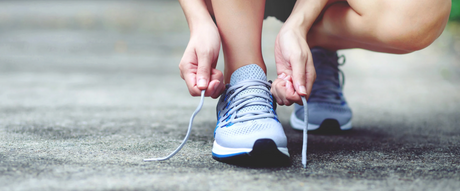What causes Achilles Tendonitis?
Achilles tendonitis is an overuse injury of the Achilles tendon. Overuse is the most common cause. However, other factors can contribute, such as:
• Exercising without warming up properly
• Wearing shoes that are old or do not fit well
• Wearing high heels for prolonged periods
• Bone spurs
• Age, as your Achilles tendon weakens with age and requires proper warm-up before physical activity
What are the Symptoms of Achilles Tendonitis?
The symptoms of Achilles tendonitis include:
• Pain/Swelling in the back of the heel
• Mild ache or severe pain in the back of the leg or above the heel after running or other sports activity
• Limited range of motion when flexing the foot
• The skin on your heel feels overly warm to the touch
What are Treatments for Achilles Tendonitis?
For home treatment, try the following:
• RICE (Rest, Ice, Compression, and Elevation)
• Stay off of your feet as much as possible for 1 or 2 days and take a longer break from the activity that may be causing the pain or soreness.
• Apply an ice pack for 10 to 20 minutes at least 3 times daily. This should help to reduce the swelling.
• Wear supportive insoles
How Can Insoles Help With Achilles Tendonitis?
Insoles can help alleviate achilles tendonitis in the following ways:
• Insoles with a slight heel lift can reduce tension on the Achilles tendon, providing relief and promoting healing.
• Cushioned insoles help absorb impact during walking or running, reducing stress on the Achilles tendon.
• Proper arch support can improve overall foot biomechanics, potentially reducing strain on the Achilles tendon.
• Insoles that enhance foot stability may help prevent excessive pronation, which can contribute to Achilles tendonitis.
• By evenly distributing pressure across the foot, insoles can help reduce localized stress on the heel area connected to the Achilles tendon.
How do Insoles Help With Achilles Tendonitis?
Supportive insoles can relieve pain and provide support by reducing tension on the Achilles tendon, adding much-needed shock absorption to your shoes, and improving overall foot biomechanics.
What are the Best Insoles for Achilles Tendonitis?
Where can I Buy Insoles for Achilles Tendonitis?
We recommend
Insoles.com!
Insoles.com is a family-run business, led by Board-Certified Pedorthists who handpick products designed to match your arch type, relieve pain, support your gait, and fit your lifestyle so you can move through your day with comfort and confidence.
 Try Quiz
Try Quiz